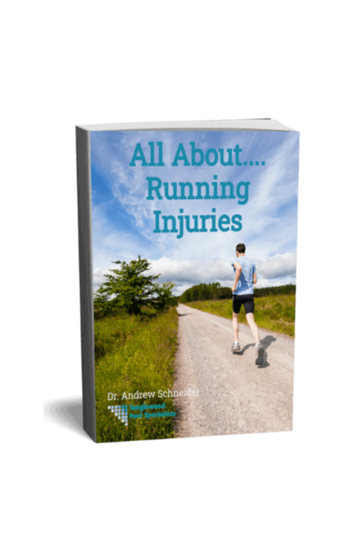Think some sneakers with all the bells and whistles will keep you from getting hurt while you run? Well then you’d better think again, at least according to a study released by Sport England.
According to research conducted by Dr. Hannah Rice, runners who wear so-called fancy sneakers are more likely to sustain a running injury than those wearing simpler, less cushioned shoes.
While the findings may seem surprising, the reasoning behind them makes sense: thinner sneakers encourage runners to land on the balls of their feet, putting less stress on the body. In contrast, runners wearing heavily padded or highly designed sneakers feel comfortable running at full force and tend toward landing on their heels, which ends up placing intense pressure on their lower extremities.
Says Dr. Rice: “This research shows that running in minimal shoes and landing on the balls of your feet reduces loading rates and may therefore reduce the risk of injury.”
Unfortunately, these findings go against a current trend for runners who race: crossing the finish line in sneakers fitted with carbon plates. So, how does that sneaker tech impact your running? And should you train in the seme shoes you're wearing for race day if they have this feature? Keep reading to find out more.
Carbon-Plated Sneakers for Runners
There's a new kind of sneaker in town that race-runners are really falling for. Called carbon shoes, or carbon-plated sneakers, devotees swear these kicks make them run at least 5% faster than their personal best. In fact, racers wearing styles like the Nike Vaporfly have broken speed records for the marathon at best. And, even when not breaking official records, the shoes can certainly help you beat your personal best record.
Now, these shoes officially qualify for the 'fancy sneaker' category. So you can probably guess that you shouldn't train in them if you want to avoid a pre-marathon injury. But as it turns out, the tech on these carbon sneakers isn't the only reason why you should train in different sneakers than your race-day shoes.
Mixing Up Sneakers to Avoid Injury
As it turns out, training in different styles of sneakers can teach your body to adapt to different running surfaces. When you switch up your training shoes, then, you're helping your body prepare for running on everything from hills and dips to concrete or sand. In turn, when you encounter these surface changes in real life, you're less likely to slip, misstep, or put undue pressure on any part of your foot or ankles. In turn, you're far less likely to sustain a running injury, whether you're out for a leisurely jog or lining up at the start of a 5 or 10k race in Houston.
At the same time, we know that you shouldn't show up for a race wearing a brand new sneaker. Instead, you need to run in those shoes a few times before the big event. Otherwise, your race is likely to be derailed by discomfort, blisters or other new-shoe ailments at worst. At best, running a race in sneakers you've never worn before is unlikely to result in your personal best finish time.
So, how can you vary your training and race day sneakers? What's the best way to avoid injury while embracing sneaker tech that could help you cross the finish line at a faster pace? Here's some expert guidance.
There are two elements you have to consider when training for a race. First, there will be days when you're working on speed. On those days, you'll likely run shorter distances, at greater speeds. At other times, however, your focus will likely be on distance. On these days, speeds are likely to be slower and more leisurely. As such, you can switch up your sneaker style based on the focus of your training for that day. For shorter, faster runs, feel free to choose shoes with some bells and whistles designed to help you pick up speed. But for days that are all about logging miles? That's when you need to choose a more traditional sneaker style. And, if you're not sure which shoe style is best for your feet, we can offer a little guidance here, with our guide on how to pick the right running shoes for your feet.
Cutting through the Data: What's the Key to Safer Running
It seems like every week brings new and interesting data, guaranteed to help you stay safe while you train. We're told how to safely increase our mileage; which shoes will absolutely protect our feet; and even the perfect posture to prevent running injuries.
Unfortunately, while these studies are certainly interesting, and always informative, it sometimes feels like every other running injury study contradicts the previous one just published.
As a podiatry practice serving runners in Houston, we know how confusing the literature can be: run barefoot; wear maximalist shoes; know your heel strike; identify your arch type…it can start to feel like too much information to process! It's enough for many of us to give up in despair, lacing up our tried-and-true sneakers and hoping for the best. (P.S. When you do lace up, there are different lacing techniques that you can play with to make your feet feel better and to avoid that dreaded black toenail that too many runners consider a badge of honor.)
Still overwhelmed by all the information being thrown at the running community? We get it. And we're here to help break it all down in ways that work for you. So, if you are concerned about running injuries but don’t know where to start when it comes to treating and preventing problems? Just come into the office for a consultation with Dr. Andrew Schneider. You can give us a call at 713-785-7881, or click here to contact us directly.




















